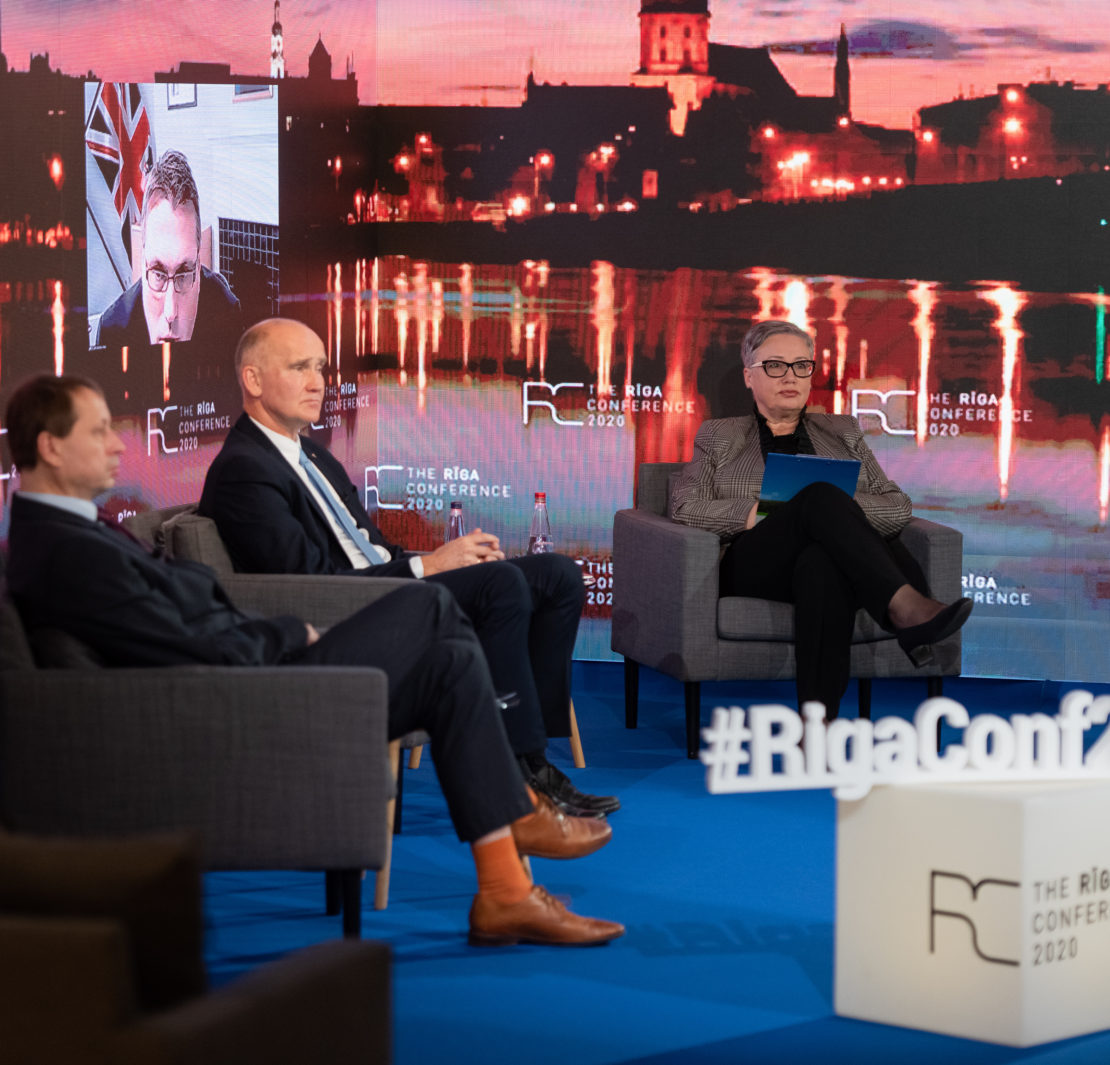Panel Participants:
John Andres Olsen, Colonel in the Royal Norwegian Air Force, Defence Attaché of the Kingdom of Norway to the UK and Ireland
Jānis Karlsbergs, Under Secretary of State – Policy Director at the Ministry of Defence of the Republic of Latvia
Martin Povejšil, Deputy Minister, Ministry of Foreign Affairs for Security and Multilateral Issues, Czech Republic
Marian Majer, the State Secretary (Deputy Minister) of Defence of the Slovak Republic
Moderator:
Prof. Žaneta Ozoliņa, Chairwoman of the Board of Latvian Transatlantic Organisation
The discussants first highlighted the difficulties in discussing the future of NATO, as these discussions tend to be viewed differently depending on what perspective is taken. The tie between reality and the future is important – it is usually those working on the ground that keep their hands on what is happening in the security landscape.
One discussant submits that NATO is already one of the most successful international efforts because it has stayed true to its purpose, values and principles for 71 years while continuously adapting to a changing strategic environment. It has gone from 12-30 members without changing mandate, which is its main strength and should remain its guiding ambition. The discussant notes, that there are six core challenges that NATO will have to meet in the future, split internally and externally.
First, NATO must reenergize cohesion among its members. Democracy and liberal values sit at the foundation of NATO and are its collective vow. Decisions must be based on mutual trust and the principle of consensus, otherwise NATO risks increasingly fracturing. For example, Article 4 has been invoked six times, which together for Article 5 are the basis for cohesion, and they must be taken seriously. Second, NATO must revitalize US leadership. It is institutionally designed for US leadership, and achieving its purpose depends on active US participation. The congress and senate must be reassured that no NATO member is stronger without the alliance and that NATO is the best way to influence policy in Europe. The US is critical to NATO missions, and the benefits of actively participating is mutually beneficial. Third, NATO must rebuild European defense forces. This should be based on fair burden sharing. Cash, capabilities and contributions must be equally divided and bolstered, two percent goal is a prime example. Capabilities must be strengthened, and plans updated, with Article 3 being particularly important to emphasizing the need for societal resilience. NATO and the European Union are strategic partners in this, and more ways must be found to complement each other rather than compete
The discussant highlights three external challenges, which contest western values and rules-based international order. First, NATO must contain Revisionist Russia to approach it from a position of strength. As Russia respects only the language of power, it must be deterred through real deterrence. As Russia can operate along the spectrum, having recapitalized its capital program, invested in conventional capabilities, and uses hybrid and cyber attacks increasingly. The Bastion Defence concept highlights that Russia has a core sphere of interest, which also provides an important space for containment that the transatlantic alliance can work towards in the future. Second, NATO must counter international terrorism. NATO must do so in cooperation with other international organizations. It is important that NATO develops a “package for the South”, to help assist, advise and train the security sector and capacity building especially in the Middle East and North Africa region. Third, NATO must comprehend and respond to China’s goals and strategies. NATO needs to develop a common approach that is inclusive of the US and the European UN. The security implications of China’s global assertiveness, as its reach keeps expanding through offensive cyber-operations and investments. The Silk Road Initiative is an example of new security and defense implications that NATO should adapt a calibrated and transactional approach to, accepting a conflictual and cooperative relationship to China.
To add to the list of challenges for NATO, another discussant emphasizes that although most agree on the aforementioned issues for NATO, there are increasing internal differences. Fragmentation to democratic values, populism, economic issues that are entering political discussion, and a floating question of strategic autonomy are all problematic to the internal stability of NATO. The members must try to reflect internally on its political will to develop defensive capabilities – although the “train” is slowly moving as more countries are increasing the defense capacity. Concurrently, the transatlantic partnership must always remain at the core to retain the strategic advantage of NATO. The discussant also elaborates on the growing threat of Russia in the short term, as their capacity during the last year has only grown. Russia is not acting only in the Baltics, but in the Mediterranean and the Arctic.
Discussants continued the theme of economic capacity, as it is vital to maintain the dual-use mandate of NATO. A stable economy is critical to active and committed participation in NATO, especially during times of crisis. NATO must thus be careful in also understanding economic status as part of societal resilience. From that perspective, the relationship between the European Union and NATO is critical, however, the exact potential for the two organizations to cooperate are still unclear but must be taken advantage of. Both sides should do their best to not hamper the full scale of each other’s capacity. One way to increase cooperation between them is to increase informal discussion about complementary efforts. This should over time increase the number of common denominators that the European Union and NATO can work together on, and help move politics in favor of more unity through different channels.
The discussants agreed, ultimately, that going forward NATO can expect the unexpected, as highlighted by NATO and the military conflicts around NATO that have manifested in the past decade. Though NATO is fit to take on these challenges and unknowns, communication and a calibration of the common vision for NATO should be at the top of the priority list in the next years to strengthen the alliance.

